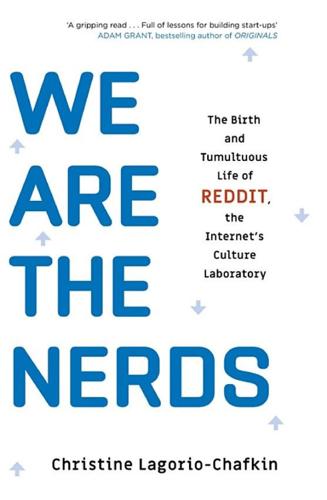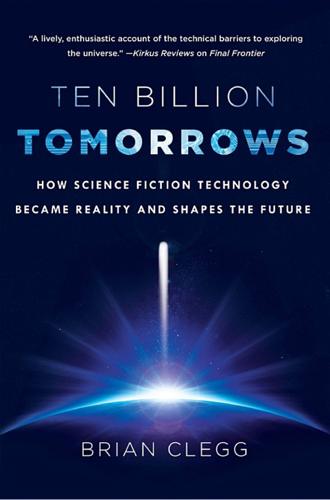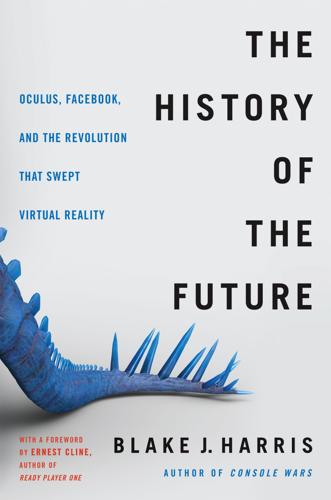
We Are the Nerds: The Birth and Tumultuous Life of Reddit, the Internet's Culture Laboratory
by
Christine Lagorio-Chafkin
Published 1 Oct 2018
Ohanian had always wanted to study law and assumed he’d use his education for good—maybe be a human rights attorney or work in nonprofits—but slowly Huffman convinced him that creating something cool in the world, even a business, could effect more change. A few months later, Huffman gave Ohanian a copy of Masters of Doom. The 2003 book by David Kushner tells the story of the founding of Id, a scrappy startup that pioneered massive technological innovations in video gaming and went on to create the gaming phenomena Quake and Doom. The book was an admiring portrait of the company’s founders: obsessive and antisocial John Carmack and charismatic “idea guy” John Romero. Ohanian adored it—and he could see something of Huffman and himself in the duo. Masters of Doom helped breathe life into what Huffman had laid out. One gray afternoon, Huffman sank into one of the recliners and launched into a rant.
…
It was high-tech for the time, and, in theory, pretty efficient. But it was inside near the cashier. Huffman would find himself outside pumping gas, thinking about going inside to order—only to have to wait again for his sandwich. Why not use similar technology to order ahead? Ohanian, fresh off reading Masters of Doom, and currently perched on the opposite recliner, sprang into idea mode: “That’s brilliant!” he thought, saying, “We could totally make a business out of that.” Lots of their friends had cell phones; it would have to be a cellular-phone-based system. Text messaging, which was catching on with some of their friends, was a possibility.

Ten Billion Tomorrows: How Science Fiction Technology Became Reality and Shapes the Future
by
Brian Clegg
Published 8 Dec 2015
Hugo Gernsback’s definition of scientifiction is quoted in John Clute and Peter Nicholls, The Encyclopedia of Science Fiction (London: Orbit, 1999), p. 311. 2. BLUE PILL OR RED PILL? The story in which “cyberspace” is first used by Gibson was William Gibson, “Burning Chrome,” Omni (July 1982). Information on John Carmack’s inspiration by the Star Trek holodeck is from David Kushner, Masters of Doom (London: Piatkus, 2003), p. 25. The experiment relaying images from a cat’s retina onto a screen is described in G. B. Stanley, F. F. Li, and Y. Dan, “Reconstruction of Natural Scenes from Ensemble Responses in the Lateral Geniculate Nucleus,” Journal of Neuroscience 19, no. 1 (1999): 8036–42.

All Your Base Are Belong to Us: How Fifty Years of Video Games Conquered Pop Culture
by
Harold Goldberg
Published 5 Apr 2011
Phoenix, The Rise & Fall of Videogames (Rolenta Press, 2001). Kane, Mitchell. Game Boys (Viking Adult, 2008). Kent, Steven L. The Ultimate History of Video Games (Three Rivers Press, 2001). King, Stephen. Danse Macabre (Everest House, 1981). Kohler, Chris. Retro Gaming Hacks (O’Reilly Media, 2005). Kushner, David. Masters of Doom (Random House, 2003). Levy, Steve. Hackers: Heroes of the Computer Revolution (Doubleday, 1984). Manguel, Alberto. A History of Reading (Viking, 1996). Poole, Steve. Trigger Happy (Arcade Publishing, 2000). Saltzman, Marc. Game Design Secrets of the Sages (Brady, 2000). Sheff, David. Game Over (Random House, 1993).

The History of the Future: Oculus, Facebook, and the Revolution That Swept Virtual Reality
by
Blake J. Harris
Published 19 Feb 2019
“RAGE REVIEW: A Visually Stunning, Relatively Safe Shooter from id Software.” IGN, October 3, 2011 2.Takahashi, Dean. “Review: id Software Grows Up with Next-Generation Shooting Game Rage.” Venture Beat, October 3, 2011. 3.Schiesel, Seth. “Wasteland of Mutants and Thugs.” The New York Times, October 11, 2011. 4.Kushner, David. Masters of Doom: How Two Guys Created an Empire and Transformed Pop Culture. New York: Random House, 2003. 5.Abrash, Michael. “Valve: How I Got Here, What It’s Like, and What I’m Doing.” Ramblings in Valve Time, April 13, 2012. 6.Carmack, John. “Parasites.” Slashdot (Comments Section), June 2, 2005. 7.“Products: Personal 3D Viewer.”

Valley of Genius: The Uncensored History of Silicon Valley (As Told by the Hackers, Founders, and Freaks Who Made It Boom)
by
Adam Fisher
Published 9 Jul 2018
Sanjeev Kumar and a few other engineers, anticipating the coming digital music era, formed a company in 1999 to design the custom chips that would be needed for a Walkman-like MP3 player. Apple became their biggest client when it decided to roll out the iPod in 2001. David Kushner is a writer specializing in the history of gaming culture. His books Masters of Doom, Jacked: The Outlaw Story of Grand Theft Auto, and, most recently, Rise of the Dungeon Master: Gary Gygax and the Creation of D&D define the genre. Butler Lampson started designing computers while still a student at UC Berkeley in the sixties. Later, at Xerox PARC, he was a key force behind the Alto, Ethernet, and the laser printer.

Tools of Titans: The Tactics, Routines, and Habits of Billionaires, Icons, and World-Class Performers
by
Timothy Ferriss
Published 6 Dec 2016
.: The Oxford Book of Aphorisms (John Gross), Daily Rituals: How Artists Work (Mason Currey), Easy Riders, Raging Bulls: How the Sex-Drugs-and-Rock ’N’ Roll Generation Saved Hollywood (Peter Biskind), The Big Book of New American Humor; The Big Book of Jewish Humor (William Novak and Moshe Waldoks) Ohanian, Alexis: Founders at Work: Stories of Startups’ Early Days (Jessica Livingston), Masters of Doom: How Two Guys Created an Empire and Transformed Pop Culture (David Kushner) Palmer, Amanda: Dropping Ashes on the Buddha: The Teachings of Zen Master Seung Sahn; Only Don’t Know: Selected Teaching Letters of Zen Master Seung Sahn (Seung Sahn), A Short History of Nearly Everything (Bill Bryson) Paul, Caroline: The Things They Carried (Tim O’Brien), The Dog Stars (Peter Heller) Polanco, Martin: The Journey Home (Radhanath Swami), Ibogaine Explained (Peter Frank), Tryptamine Palace: 5-MeO-DMT and the Sonoran Desert Toad (James Oroc) Poliquin, Charles: The ONE Thing (Gary Keller and Jay Papasan), 59 Seconds: Change Your Life in Under a Minute (Richard Wiseman), The Checklist Manifesto (Atul Gawande), Bad Science (Ben Goldacre), Life 101: Everything We Wish We Had Learned about Life in School—But Didn’t (Peter McWilliams) Popova, Maria: Still Writing (Dani Shapiro), On the Shortness of Life (Seneca), The Republic (Plato), On the Move: A Life (Oliver Sacks), The Journal of Henry David Thoreau, 1837–1861 (Henry David Thoreau), A Rap on Race (Margaret Mead and James Baldwin), On Science, Necessity and the Love of God: Essays (Simone Weil), Stumbling on Happiness (Daniel Gilbert), Desert Solitaire: A Season in the Wilderness (Edward Abbey), Gathering Moss (Robin Wall Kimmerer), The Essential Scratch & Sniff Guide to Becoming a Wine Expert (Richard Betts) Potts, Rolf: Leaves of Grass (Walt Whitman), Writing Tools: 50 Essential Strategies for Every Writer (Roy Peter Clark), To Show and to Tell: The Craft of Literary Nonfiction (Phillip Lopate), Screenplay: The Foundations of Screenwriting (Syd Field), Story (Robert McKee), Alien vs.

The Friendly Orange Glow: The Untold Story of the PLATO System and the Dawn of Cyberculture
by
Brian Dear
Published 14 Jun 2017
Berg, and E. H. Schillinger. Men and Ideas in Engineering: Twelve Histories from Illinois. Urbana: University of Illinois Press, 1967. Koster, R. “The Online World Timeline—Ralph’s Website.” Retrieved 2016-06-23 from http://www.raphkoster.com/games/the-online-world-timeline/. Kushner, D. Masters of DOOM: How Two Guys Created an Empire and Transformed Pop Culture. New York: Random House, 2003. Kypta, L. S., and H. Bobotek. “Automatic Air Traffic Control, Part II, an Experimental Control Logic.” CSL UIUC, 1963. Lagemann, E. C. “The Plural Worlds of Educational Research.” History of Education Quarterly.